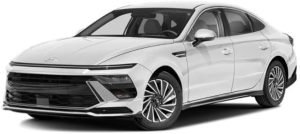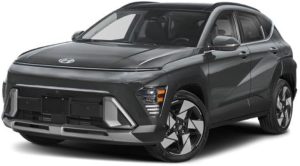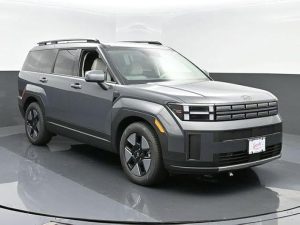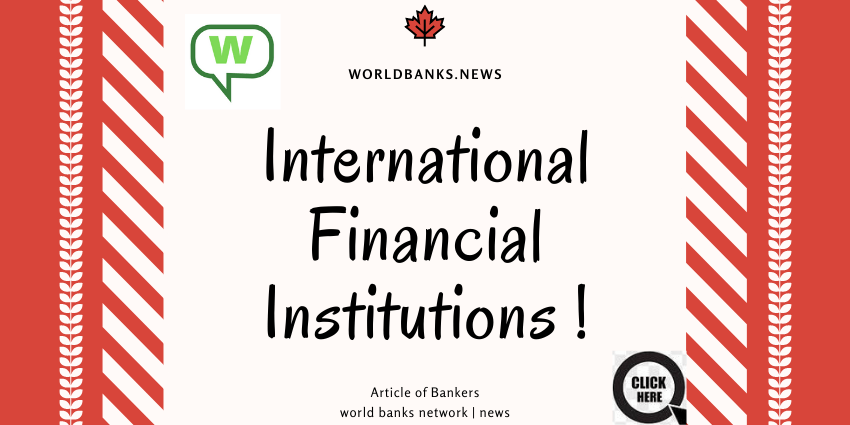INTERNATIONAL FINANCIAL INSTITUTIONS
INTERNATIONAL MONETARY FUND (IMF):
Also known as World bank, the IBRD is an offshoot of the Bretton Woods conference of 1944. It’s main functions is to provide long terms capital assistance to its member countries for their reconstruction & development. IBRD is an inter governmental organization. Only governments iof various countries can become its members. The total membership of the Bank is 184. The management of the Bank is same lines that of IMF. 5(Fi8ve) biggest shareholders are USA, UK, Germany, Japan & France. Head Office of World Bank is located at Washington, USA & the present President is Mr. Robert B. Zoelick.
Resources: The bank started with an Authorized capital of 10,000 million dollars, divided into 1,00,000 shares of $ 1,00,000 each.
Lending Policy:
i). All loans are made to governments or they must be guaranteed by governments.
ii). Repayment is to be made within ten to thirty five years.
iii). Loans are made only in circumstances in which other sources are not available.
iv). Investigations are made of the probability of repayment, considering both the soundness of the project and the financial responsibility of the government.
v). Sufficient surveillance is maintained by the Bank over the carrying out of the project to assure that it is relatively well executed and managed.
vi). Loans are sanctioned on economic and not political considerations.
vii). The loan is meant to finance the foreign exchange requirements of specific projects, normally the borrowing country should mobilize it’s domestic resources. World Bank has two affiliates. These are:
I). International Finance Corporation &
ii). International Development Association.
INTERNATIONAL FINANCE CORPORATION(IFC):
International Finance Corporation was established in 1956. Only members of World Bank can become the members of IFC. The IFC makes advances in the form of long term loans or invests in the equity shares in a wide variety of productive private enterprises in developing countries. Resources: The resources of IFC consist of capital contributed by the members and accumulated reserves. It can also borrow from the World Bank for the purposes of lending and amount of equal to four times its unimpaired subscribed capital; and surplus.
INTERNATIONAL DEVELOPMENT ASSOCIATION(IDA):
International Development Association(IDA) was established in 1960 to provide ‘soft loan’ to economically sound projects which create ‘social capital’ such as the construction of roads and bridges, slum clearance and urban development. The IDAS provides loans for such projects interest free and fior longer periods. Therefore, IDA is often referred as the ‘soft loan window’ of the World Bank. Special features of the financial assistance of IDA:
a). The credit is interest free. Only a small service charge of 0.75% per annum is payable on the amount withdrawn and outstanding to cover administrative erxpenses.
b). Repayment period is long extending over 50 years. There is an initial moratorium period of 10 years and the amount borrowed is repayable in the next 40 years.
c). IDA finance not only the foreign exchange component but also a part of the domestic cost.
d). The credit can also be repaid in the local currencies of borrowing countries. Thus the repayment of loan does not burden the balance of payment of the country.
MULTILATERAL INVESTMENT GUARANTEE AGENCY (MIGA):
The World Bank established the Multilateral Investment Guarantee Agency in 1988 to encourage foreign investment in developing countries by issuing guarantees against non commercial risks. The membership is open to all World Bank members. Current membership is 157.
ASIAN DEVELOPMENT BANK (ADB):
Asian Development Bank (ADB) is a development bank started in 1966 under the aegis of ECAFE(United Nations Economic Commission for Asia and Far East). Its membership consists of countries from Asian region as well as from other regions. There are 61 members of which 44 countries are from Asia-Pacific & 17 countries are from Europe & North America. Head Quarter of ADB is located at Manila.
THE ISLAMIC DEVELOPMENT BANK (IDB):
Islamic Development Bank has been started its operation on 20th October 1975 with a view to helping and co-operating Muslim countries in the task of financing economic development and to give a real shape to the idea of interest free banking. Its principal office is located at Jeddah, Saudi Arabia and the bank is authorized to established agencies or branch elsewhere. Its financial year is Hijre year. The official language of the Bank is Arabic but in addition, English & French are used in working language. Members of the Organization of Islamic Countries(OIC) willing ot accept the terms and conditions as decided upon by the Board of Governors, are entitled to become the members of this bank.
ASIAN CLEARING UNION:
The initiative to establish Asian Clearing Union (ACU) was taken by Economic & Social Commission for Asia & Pacific (ESCAP) in 1974. Thus Asian Clearing Union (ACU) was established in December’1974 with the object to fostering regional cooperation in Asia regard to trade & payments. The primary purpose of the Union s to arrange settlement of the current international transactions among the participating countries on a multilateral basis in a fashion more or less similar to a clearing house that arranges inter bank settlement of the customers cheque.
Members of Asian Clearing Union (ACU) are: Bangladesh, India, Pakistan, Srilanka, Nepal, Myanmar & Iran. Head quarter of Asian Clearing Union (ACU) located at Tehran, Iran. Settlement of payments: The instruments that can be used for payments through the Union are TT, MT, Bank Drafts & Bill of Exchange payable at sight. For settlement of payment through the Unions clearing mechanism, the instruments of payments, namely invoice, Bill of Exchange, drafts etc. are to be drawn in ACU Dollars. An ACU Dollars is an accounting unit corresponding in value to the ordinary US Dollars. Fore receiving payments for export or making payment for imports, the authorized dealers have been permitted to open ACU dollar accounts with their correspondents in other participant countries. Similarly, Ads have been permitted to open ACU dollar account in their books in the name of their correspondents in other participant countries.
THE EUROPEAN ECONOMIC COMMUNITY (EEC):
The European Economic Community (EEC) – sometimes also known as the European Common Market (ECM) came into existence when six countries of western Europe – France, West Germany, Italy, Belgium, The Netherlands and Luxembourg signed the ‘Treaty of Rome’ in 1957. This treaty came into force on 1st January, 1958. Britain, Denmark and Ireland joined as members in the community in 1973 while its tenth member – Greece joined in 1977. Spain, the eleventh member, joined the community in 1984. The main objectives of the EEC is to foster trade within the community by eliminating all obstacles through progressive abolition of customs duties, quotas, tariffs and other exchange control requirements affecting the intra regional trade.
European Economic Community became European Union in 1993 and was joined by Austria, Finland & Sweden in 1995. European Union is operating as a single market w.e.f. 1st January’1993 & is contributing 40%of the world trade. /14 countries.
GENERAL AGREEMENT ON TARIFFS AND TRADE (GATT):
GATT signed in Geneva in 1947 to develop world trade by reducing tariffs, quota restrictions and import control among the member countries signing the agreement. In order to supervise the globalization operations of various economies and settle their mutual disputes the GATT is replaced by World Trade Organization (WTO). It has come into effect from December 01, 1995 after seven years of protracted negotiations called ‘Uruguay Round of Trade negotiations’ on a new rule based trading system with a new apex body. Although it is commonly said that WTO is the successor of GATT, in fact, the WTO is much more. It provides a forum for continuous negotiations among member countries for further initiatives. It is also responsible for settling trade disputes among its member countries on the basis of its rules of its legal instruments.
It is a voluntary organization in which any country of the world can join, of course subject to a decision of the governing body of the WTO. A country can, as well, leave the organization on a six months notice. At present number of member countries of WTO are 145. Functions of WTO: As per Article III (1,2,3,4), the WTO should perform the following four functions:
-
- Implementation, Administration & operation of agreement and legal instruments that has been negotiated & would be negotiated in future.
- Provide a forum for further negotiation among the member countries on different issues of agreements & on any new issues on further liberalization of trade.
- Settlements of differences & disputes among the member countries.
- Carrying out periodic reviews of trade policies of its member countries.
WTO Legal Instruments for settlement of disputes:
- Trade In Goods (GATT – 1994 and associated agreements).
- Trade in Services (General Agreement in Trade in Services-GATS).
- Intellectual Property Rights. (Agreement on Trade related aspects of intellectual property rights – TRIPS).
-
The 04(Four) basic rules of WTO:
-
- Rule 1: Protecting Domestic Industry by Tariffs only: The agreement recognize the importance of protecting a counties production from foreign competition & such protection is extended only through Tariffs.
- Rule 2: Reduction in Tariffs and bound against further increase: It provides for the reduction and elimination of Tariffs and other barriers through negotiation among the member countries. Countries are under an obligation not to increase tariffs above the bound rates.
- Rule 3: Trade accounting to the Most Favored nation (MFN): If a member country grants another country any tariffs or other benefits to any product, it must immediately and unconditionally extend it to the like product of other countries.
- Rule 4: National Treatment: An imported products which has crossed the border after payment of custom duties and other charges should not receive the treatment that is less favorable than that extended to like product domestically.
-
What are the differential treatment for developing and LDCS?
Ans. These are as follows: i). Flexibility in accepting obligations in negotiations.
-
ii). Special treatment in application of quantitative and other restriction. iii). Flexibility in protection measures.
-
iv). Exemptions from specified obligation.





















2 thoughts on “INTERNATIONAL FINANCIAL INSTITUTIONS”
well done…
Best view i have ever seen !